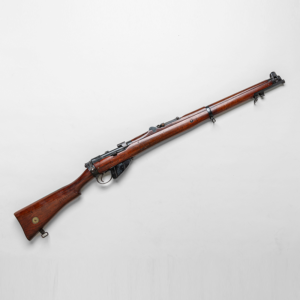A Historical Overview of the 1858 Remington Army .44 Cal Confederate Revolver
The Remington Army .44 caliber revolver, often referred to as the Model 1858, was a pivotal sidearm in the American Civil War. Its robust design, reliability, and accuracy made it a favored weapon for soldiers on both sides of the conflict. The revolver in question, marked with “CS,” denotes its use by the Confederate States Army, adding a layer of historical significance to this firearm.
Key Features and Specifications
- Caliber: .44
- Capacity: 6 rounds
- Action: Single-action percussion
- Barrel Length: 8 inches (standard)
- Frame: Closed-top design for added strength
- Finish: Blued steel with case-hardened hammer
- Grips: Walnut
Historical Significance
- Confederate Use: The “CS” marking signifies this revolver’s service within the Confederate States Army, a testament to the weapon’s adoption by both Union and Confederate forces.
- Remington’s Rise: While Colt initially dominated the revolver market, Remington’s .44 caliber Army model gained prominence during the Civil War. A fire at the Colt factory in 1864 led to increased demand for Remington revolvers, contributing to their widespread use.
- Design Innovation: The Remington Army revolver boasted a solid-frame design, setting it apart from Colt’s open-top models. This feature enhanced the revolver’s durability and strength.
Remington Army Revolver in the Civil War
- Military Adoption: The Remington Army revolver was a secondary issue firearm for the Union Army, and it saw extensive use by Confederate soldiers who acquired them through various means.
- Battlefield Performance: Its accuracy and reliability made it a valuable asset in close-quarters combat and cavalry engagements.
- Legacy: The Remington Army revolver’s reputation for quality and effectiveness cemented its place in American firearms history.
Collectors’ Item:
Today, original 1858 Remington Army revolvers, particularly those with Confederate markings, are highly sought-after by collectors and history enthusiasts. Their connection to a pivotal period in American history, coupled with their enduring design, makes them valuable artifacts of the past.









